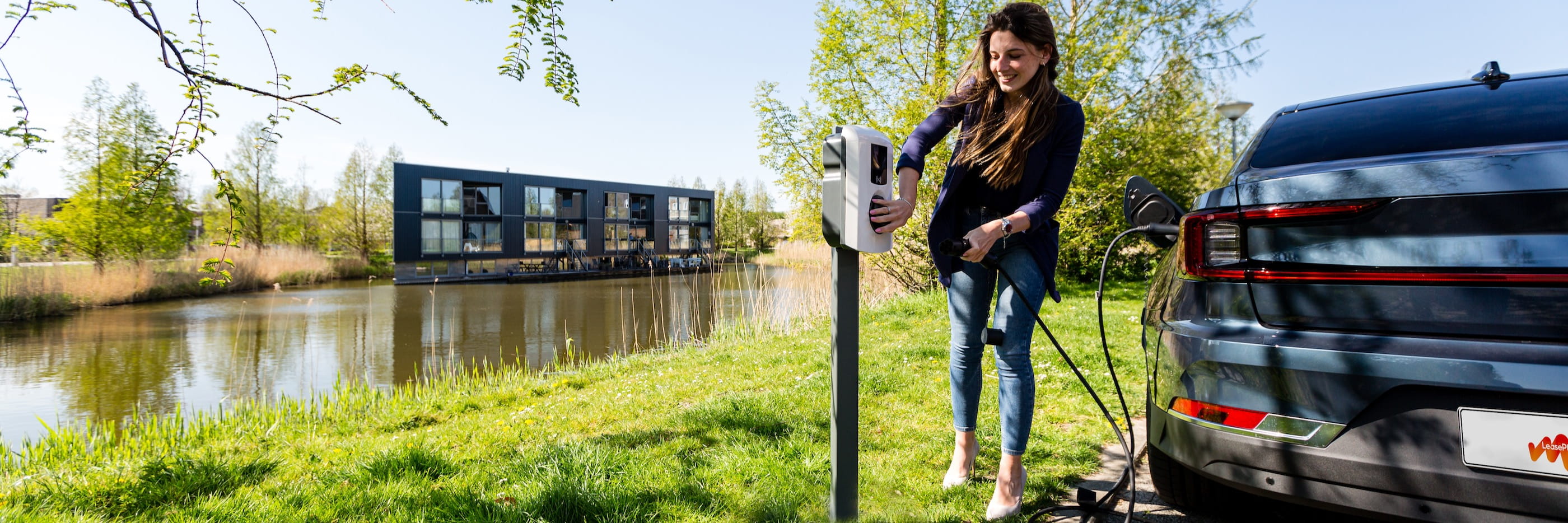
How to charge an EV
All you need to know about charging
When it comes to charging your electric vehicle, there’s a lot to learn. To help make your switch to battery-powered mobility easier, we explain everything you need to know about the basics of EV charging. Whether it is at home or on the road, LeasePlan provides an extensive guide for all your electric charging needs.
How to recharge your battery at home, work, or in public
Whether you’re using a home charging point or a public one, it’s easy to recharge your battery if you follow these simple steps.
Home charging
Charging at home conveniently enables you to wake up to a fully charged electric vehicle. But it’s only an option for specific living situations. If home charging is for you, you’ll need to know all about the advantages and costs. You’ll also need to learn about the different types of charging points and how to get, install and manage one of your own.
Public charging
Do you need to charge on the go? Public charging networks are growing each year across Europe and beyond. No need to worry about running out of range when there's always a public charger close by. We've got you covered with everything you need to know about using public chargers. From the speed, the costs, and using charge cards.
Charging speeds: How fast can I charge?
The answer is - it depends.
Different types of charging points offer different speeds, and your EV will be limited by its ability to receive and convert that electricity. If your car has an 11 kW onboard charger and you plug into a 7.4 kW home charger, you will only be charging at 7.4 kW. The car could take more power, but the charging point is limited. If your EV has a 6.6 kW onboard charger and you plug it into a standard, single-phase home 7.4 kW charging point, you will be limited to charging at 6.6 kW because the EV can’t take more.
7.4 kW power output
- 50 kWh EV battery7h45m
- 75 kWh EV battery10h
11 kW power output
- 50 kWh EV battery5h15m
- 75 kWh EV battery6h45m
50 kW power output
- 50 kWh EV battery53 min
- 75 kWh EV battery1h20m
150 kW power output
- 50 kWh EV battery18 min
- 75 kWh EV battery27 min
This is for illustrative purposes only and charging times may differ depending on vehicle. Typically at 80% charge battery charging speed will slow.
Make the most out of electric charging
When, where, and how long you charge an electric vehicle can make a difference in costs, so here are a few ways you can save money by doing your charging more wisely.
Discover more about EV charging speeds, battery power and charger types.
Charge your EV at home during off-peak hours:
Charging your EV car’s battery at home is not only the most convenient, but with EV-friendly electricity rates, you could reduce your annual fuel costs by up to 60%. To get your EV charging costs down even further, consider solar or even wind power for your home. Charging your electric car's battery with sunshine is not only super green - it’s free!
Choose the best app:
In your everyday driving, you’ll probably manage with a single app that helps you find a charging station, but if you’re travelling abroad or even touring multiple countries, you might find one app just isn’t enough. We've reviewed the best EV apps for you.


